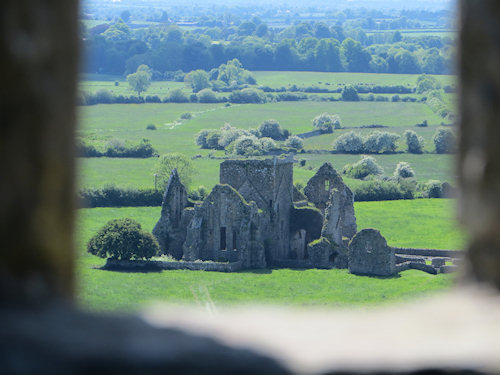
As regular readers will know – I am a big fan of ruins. Give me a crumbling castle to explore, or an abandoned abbey, and I’m set for hours of enjoyment.
I love the history of such places and like to wonder about the people who lived there.
What I normally don’t expect is to see their faces looking back at me from the stone.
I first encountered the faces in the stone on the first day of my trip – at Jerpoint Abbey in County Kilkenny.
Jerpoint was a Cistercian abbey, founded in the second half of the 12th century and it flourished until England’s King Henry VIII did his thing in the mid-1500s.
The ruins are in wonderful condition and as it was quite early in the day, almost deserted when we arrived.
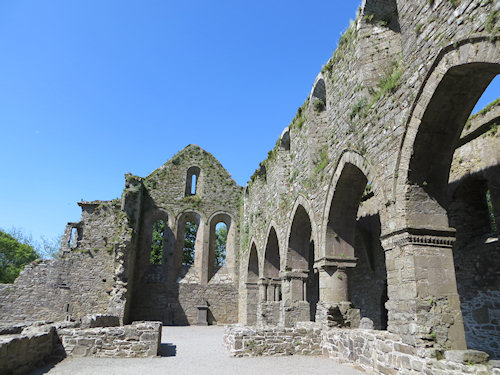
I saw the first faces within minutes of stepping inside the transept. The carving are remarkably well preserved both in the church itself, and even more so in the cloister.

One of the things that make this remarkable is that the Cistercians didn’t believe in ornamenting their churches. They saw it as a distraction from religious contemplation. They believed in simple and utilitarian buildings, with perhaps a simple crucifix.
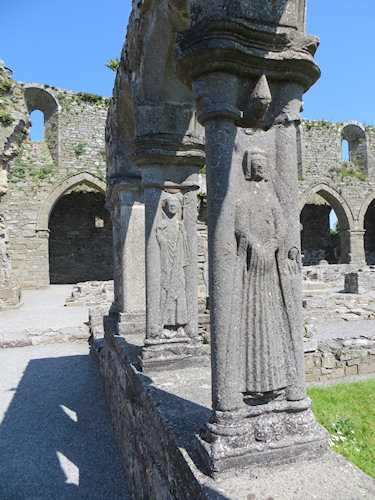
After Jerpoint, we made our way to Cashel in County Tipperary. The Rock of Cashel is one if Ireland’s most important historic sites.
St Patrick supposedly came here to convert the King of Muster to Christianity. In fact, local mythology says the rock itself is the saint’s work. When St Patrick expelled Satan from a mountain some 20 miles away, legend had it the rock upon which the castle is built landed in its current location, looming over the town of Cashel.

Like most such monuments, the building here had been built a destroyed and rebuilt many times over the centuries. What is now there, protected of course, is fascinating. The Celtic crosses are just stunning. Once again, it was the faces that drew me and had me asking questions.
Life must have been so very hard for them, compared to how we live now. I wonder how they felt about their lives. How they loved. How they raised their children and what stories they told them. How did these people spend the long cold winter evenings? What songs did they sing?
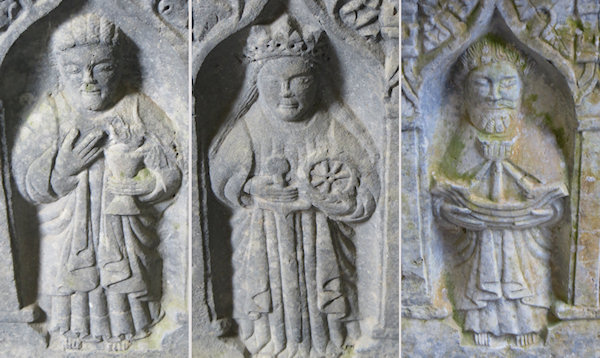
Archaeology has answered a lot of these questions – but there are so many more that can’t be answered. We know how they made their clothes, and what they ate. Some of the stories and songs have been preserved over the centuries, but not their thoughts.
We know our world so well. International news and politics are everyday. We see pictures from the far corners of the globe, even from space and it seems commonplace. As someone who travelled to so many parts of the world, I find it hard to imagine what life would be like not knowing what was out there, beyond the horizon. I wonder did they ever turn their faces to the sky at night and think that one day men would travel into space.
I wonder how they imagined the generations that would follow. They certainly could not have imagined that someone like me would see their faces carved in stone and send images of those carvings around the world with a simple click.
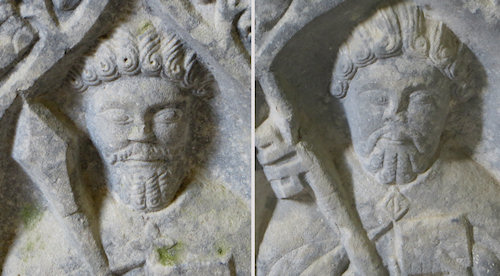
Ireland has a great literary heritage, from the intricacies of their legends and folk tales, to classic novels and modern literary gems. After just a couple of days, I think I began to understand why. Everywhere I looked, something caused me to ask questions. To wonder how… why… who…
And aren’t questions the very foundation of inspiration?
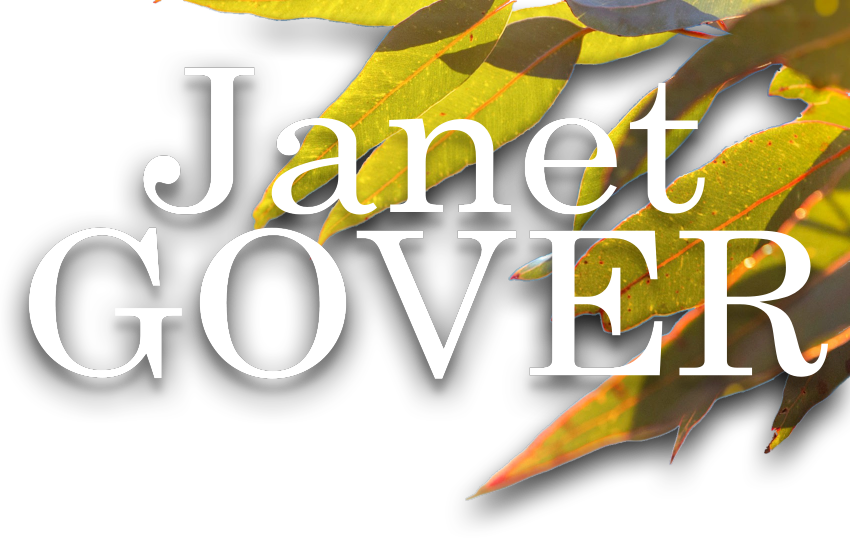
Comments
2 responses to “Faces in the stone”
Fascinating, Janet. Like you, I’ll go anywhere to see a castle or monastic ruin. However, I don’t think the carved figures are monastic staff – one of them is wearing a crown, or possibly halo, for a start! I think they are saints – each one with his attribute which tells us who he (or she) is. For example, the figure in the centre is probably St Catherine. She is holding a wheel and a sword. She was tortured by being broken on a wheel (a Catherine wheel) but the wheel collapsed, so they beheaded her with a sword. The wheel and the sword are her attributes.
St Peter has his crossed keys, St Mark has a lion, St Mary Magdalene has a pot of ointment, and so on.
You are probably right Elizabeth. I am not as well informed as you when it comes to saints. Which is strange given that I went to a church school. But it was a different church. Whatever or whoever they are, I loved the carvings. So evocative! Janet.